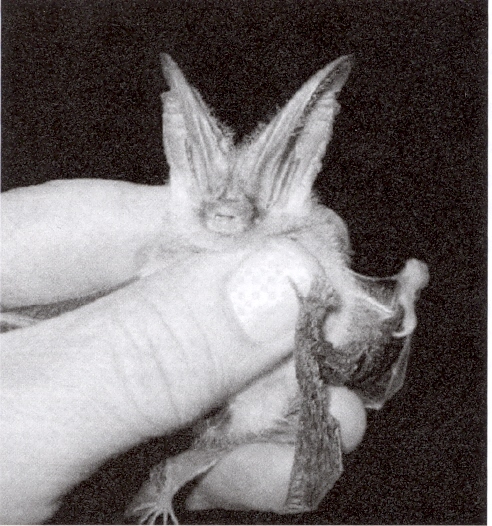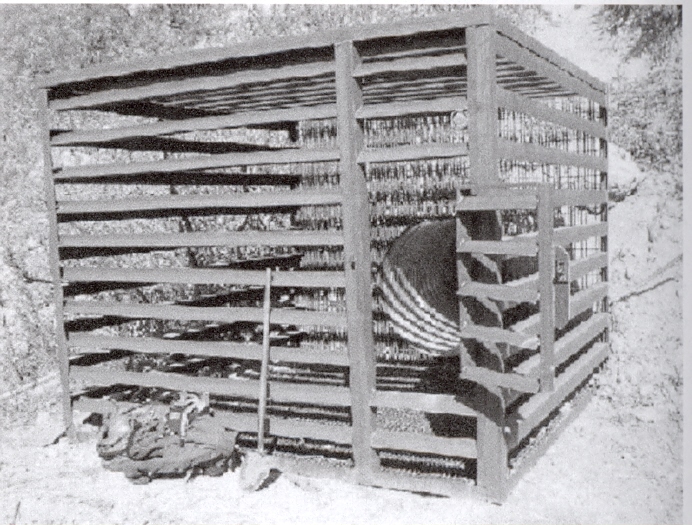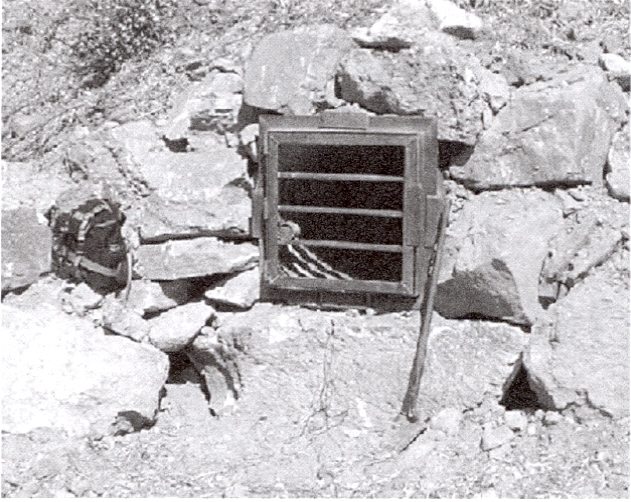Portal Stabilization and
Bat-Gates at the Elephant Mountain Mines
|
BY PHIL NYLAND ASPEN-SOPRIS DISTRICT WILDLIFE BIOLOGIST Since 2005, the Aspen-Sopris District and Colorado Division of Wildlife
|
 Figure 1. A Townsend'sBig-Eared bat.  Figure 2. A bat cupola protects the lower mine opening. |
is a Forest Service Sensitive Species on the Rocky Mountain Regional Forester's Sensitive Species list. Cave
bats are a Management Indicator Species on White River National Forest, and have a number of Forest Plan objectives,
standards, and guidelines associated with their protection. METHODS AND TECHNIQUES USED After conducting NEPA, in Fall 2008, under contract administered by Colorado Division of Reclamation, Mining, and Safety (DRMS), culverts and bat-gates were used to stabilize four mine openings. The collapsing openings of the lower and middle adit portal were excavated to insert culverts, which were sealed in place using rock and expanding self-hardening foam. The air-vent shaft was also sealed with foam and a metal air-flow gate was installed over the opening. Excavated material was replaced over the culverts. Attached to the lower adit culvert is a large chamber, or "bat cupola," that is designed to allow bat egress through 5.75-inch gaps in the bars (Figure 2). Attached to the middle adit is a bat-friendly gate (Figure 3). The cupola and bat-gate prevent general human access due to the bar spacing, but allow bat and air movement. The structures have lockable doors, to allow entry of authorized personnel. The upper adit is equipped with a lockable air-flow gate to allow air |
- Page 1 -
|
movement, but restricts unauthorized human entry. Work was conducted by a five-person crew.
|
 Figure 3. A standard bat-gate also protects the lower mine.  Figure 4. The bat-gat project protecting the Townsend's big-eared bats in report in local community newspapers. |
REALIZED/EXPECTED RESULTS Installing the two bat-gates and air-vent shaft enhances approximately 30 acres of bat habitat, based on 20 acres representing the area for a mine opening heavily used by bats (lower adit) plus 10 acres representing the area for a mine opening used by few bats (middle adit and air-vent, each 5 acres). Characteristics of habitat that were enhanced are stabilized access to maternity roosting habitat, securing roost sites from human disturbance, improving air flow to roost sites in the cave and mine, and maintaining roost sites in close proximity to foraging habitat and water.
PRIMARY PARTNER LIST Colorado Division of Wildlife - Glenwood Springs, CO; Colorado Division of Reclamation,
Mining, and Safety; Robert Congdon, Maree Love mineral claim holder; Pitkin County Open Space and Trails; and the
Colorado Grottos All photos courtesy White River National Forest. |
- Page 2 -